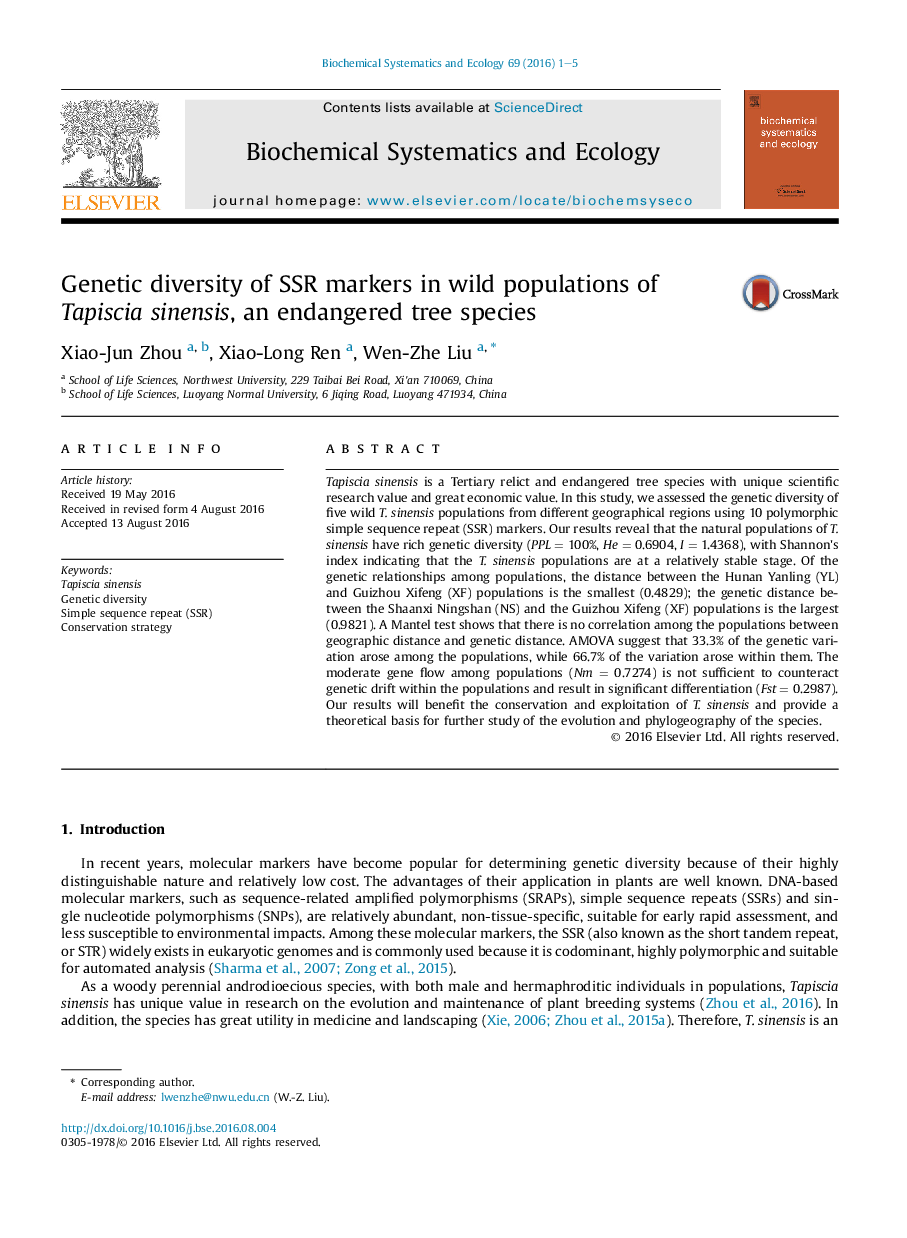| کد مقاله | کد نشریه | سال انتشار | مقاله انگلیسی | نسخه تمام متن |
|---|---|---|---|---|
| 1351206 | 1500397 | 2016 | 5 صفحه PDF | دانلود رایگان |
• The natural populations of T. sinensis have rich genetic diversity.
• There are moderate gene flow and significant differentiation among populations.
• There is no correlation between the genetic and geographical distances.
• These populations should be strictly protected to avoid further destruction.
• The habitat protection of T. sinensis is a matter of great urgency.
Tapiscia sinensis is a Tertiary relict and endangered tree species with unique scientific research value and great economic value. In this study, we assessed the genetic diversity of five wild T. sinensis populations from different geographical regions using 10 polymorphic simple sequence repeat (SSR) markers. Our results reveal that the natural populations of T. sinensis have rich genetic diversity (PPL = 100%, He = 0.6904, I = 1.4368), with Shannon's index indicating that the T. sinensis populations are at a relatively stable stage. Of the genetic relationships among populations, the distance between the Hunan Yanling (YL) and Guizhou Xifeng (XF) populations is the smallest (0.4829); the genetic distance between the Shaanxi Ningshan (NS) and the Guizhou Xifeng (XF) populations is the largest (0.9821). A Mantel test shows that there is no correlation among the populations between geographic distance and genetic distance. AMOVA suggest that 33.3% of the genetic variation arose among the populations, while 66.7% of the variation arose within them. The moderate gene flow among populations (Nm = 0.7274) is not sufficient to counteract genetic drift within the populations and result in significant differentiation (Fst = 0.2987). Our results will benefit the conservation and exploitation of T. sinensis and provide a theoretical basis for further study of the evolution and phylogeography of the species.
Journal: Biochemical Systematics and Ecology - Volume 69, December 2016, Pages 1–5
